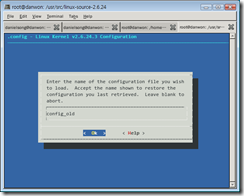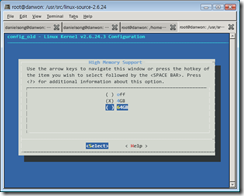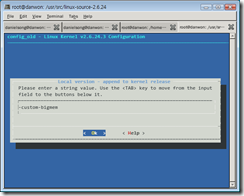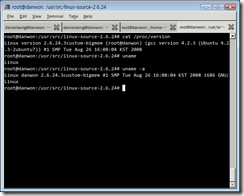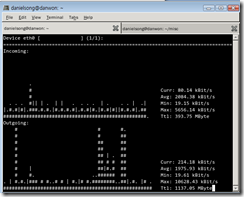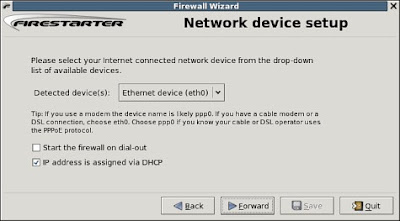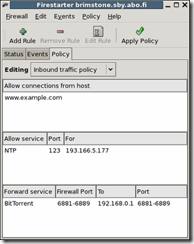커널 2.6부터 지원됩니다.
프로세스는 sched_setaffinity()가 있습니다.
쓰레드는 pthread_setaffinity_np()가 있습니다
커널의 소스에 보면 migration하는 경우에도 cpu affinity를 보고 설정된 CPU가 아니면 하지 않습니다.
그러므로 …_setaffinity()를 호출하면 해당 CPU에 고정되는 것이 맞습니다.
Hotplug시 affinity 설정된 모든 CPU가 꺼진 경우만 예외적으로 affinity를 변경합니다.
static void sched_migrate_task(task_t *p, int dest_cpu)
{
migration_req_t req;
runqueue_t *rq;
unsigned long flags;
rq = task_rq_lock(p, &flags);
if (!cpu_isset(dest_cpu, p->cpus_allowed)
|| unlikely(cpu_is_offline(dest_cpu)))
goto out;
....
static
int can_migrate_task(task_t *p, runqueue_t *rq, int this_cpu,
struct sched_domain *sd, enum idle_type idle,
int *all_pinned)
{
/*
* We do not migrate tasks that are:
* 1) running (obviously), or
* 2) cannot be migrated to this CPU due to cpus_allowed, or
* 3) are cache-hot on their current CPU.
*/
if (!cpu_isset(this_cpu, p->cpus_allowed))
return 0;
아래 코드를 2.6.24, x86, 4코어에서 테스트했습니다.
( http://www.thinkingparallel.com/2006/08/18/more-information-on-pthread_setaffinity_np-and-sched_setaffinity/ 에 나온 코드를 컴파일 되도록 수정 )
/* Short test program to test the pthread_setaffinity_np
* (which sets the affinity of threads to processors).
* Compile: gcc pthread_setaffinity_np_test.c
* -o pthread_setaffinity_np_test -lm -lpthread
* Usage: ./pthread_setaffinity_test
*
* Open a "top"-window at the same time and see all the work
* being done on CPU 0 first and after a short wait on CPU 1.
* Repeat with different numbers to make sure, it is not a
* coincidence.
*/
#include <stdio.h>
#include <math.h>
#include <unistd.h>
#define __USE_GNU
#include <pthread.h>
double waste_time(long n)
{
double res = 0;
long i = 0;
while (i <n * 200000) {
i++;
res += sqrt(i);
}
return res;
}
void *thread_func(void *param)
{
unsigned long mask = 1; /* processor 0 */
/* bind process to processor 0 */
if (pthread_setaffinity_np(pthread_self(), sizeof(mask), (cpu_set_t *)&mask) <0) {
perror("pthread_setaffinity_np");
}
/* waste some time so the work is visible with "top" */
printf("result: %f\n", waste_time(2000));
mask = 2; /* process switches to processor 1 now */
sleep(2);
if (pthread_setaffinity_np(pthread_self(), sizeof(mask), (cpu_set_t *)&mask) <0) {
perror("pthread_setaffinity_np");
}
/* waste some more time to see the processor switch */
printf("result: %f\n", waste_time(2000));
return 0;
}
int main(int argc, char *argv[])
{
pthread_t my_thread;
if (pthread_create(&my_thread, NULL, thread_func,
NULL) != 0) {
perror("pthread_create");
}
//pthread_exit(NULL);
pthread_join(my_thread, NULL);
return 0;
}
———————————
프로세스의 경우 소스는 다음과 같습니다.
/* Short test program to test sched_setaffinity
* (which sets the affinity of processes to processors).
* Compile: gcc sched_setaffinity_test.c
* -o sched_setaffinity_test -lm
* Usage: ./sched_setaffinity_test
*
* Open a "top"-window at the same time and see all the work
* being done on CPU 0 first and after a short wait on CPU 1.
* Repeat with different numbers to make sure, it is not a
* coincidence.
*/
#include <stdio.h>
#include <math.h>
#include <unistd.h>
#define __USE_GNU
#include <sched.h>
double waste_time(long n)
{
double res = 0;
long i = 0;
while(i <n * 200000) {
i++;
res += sqrt (i);
}
return res;
}
int main(int argc, char **argv)
{
unsigned long mask = 1; /* processor 0 */
/* bind process to processor 0 */
if (sched_setaffinity(0, sizeof(mask), (cpu_set_t*)&mask) <0) {
perror("sched_setaffinity");
}
/* waste some time so the work is visible with "top" */
printf ("result: %f\n", waste_time (2000));
mask = 2; /* process switches to processor 1 now */
if (sched_setaffinity(0, sizeof(mask), (cpu_set_t*)&mask) <0) {
perror("sched_setaffinity");
}
/* waste some more time to see the processor switch */
printf ("result: %f\n", waste_time (2000));
return 0;
}





